Bettas, or Siamese fighters, are small, tropical fish that have been kept as pets for over 100 years. They are usually the first choice of fish for those who want a small and colorful fish that can be housed in nano aquariums. Being a responsible betta fish owner means ensuring your fish is kept happy and healthy through the next three to five years of life.
Learn the warning signs that your betta fish may be unhealthy, as well as signs your fish is happy and thriving under your care. Although bettas are relatively hardy and adaptable fish, they are certainly capable of becoming ill. Sick bettas will show signs that they are unhealthy. Let’s take a look at these signs below.

1. Discoloration
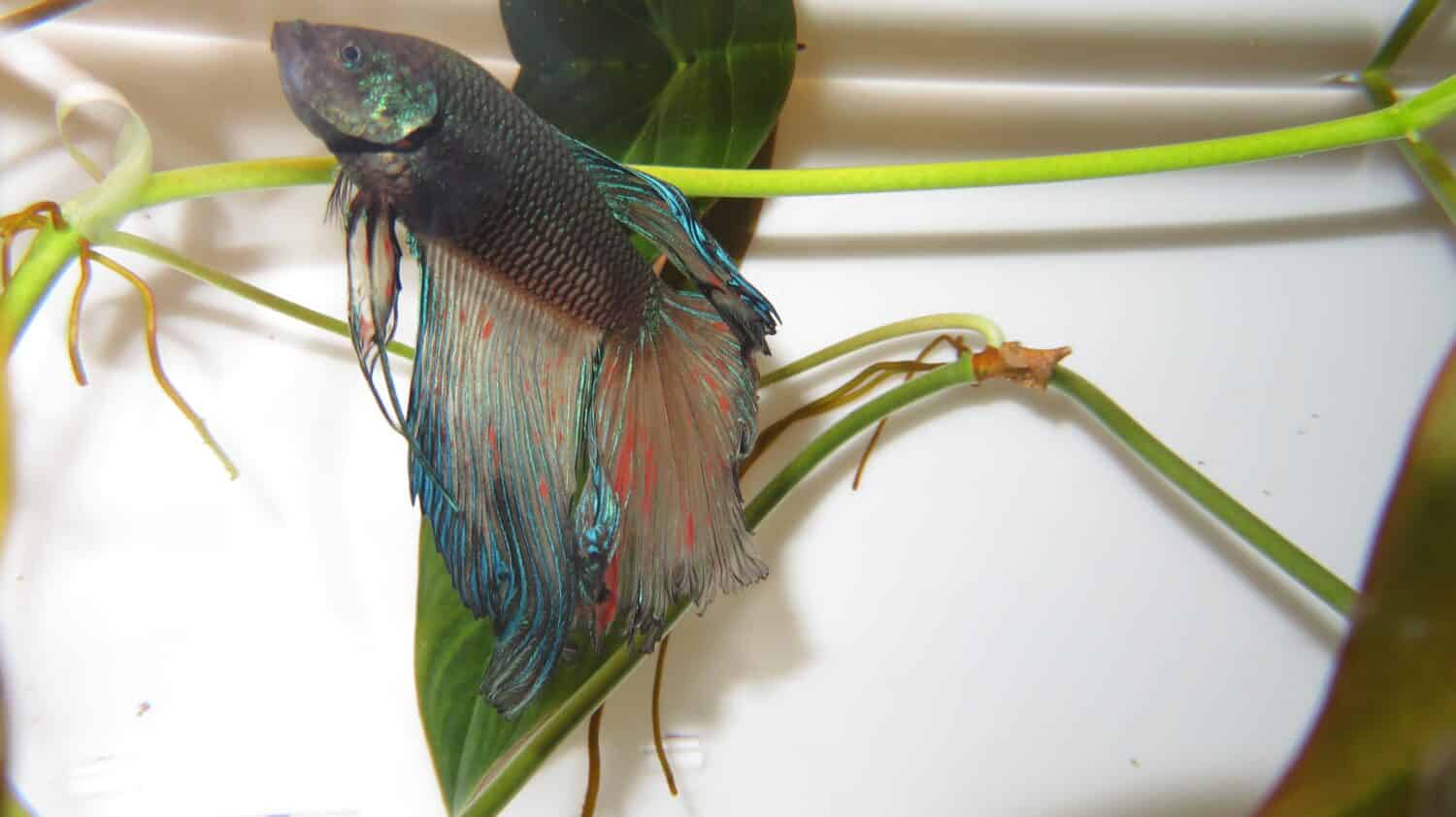
A sick or stressed betta fish will lose their vivid colors and appear dull.
©elisabet nugraheni/Shutterstock.com
Bettas are usually vibrantly colored fish, but if you notice that your once colorful betta looks washed out or faded, it can be a sign of illness. Bettas lose their vivid coloration in stressful situations or from disease. This is why your pet store betta may look dull in color and then seem to gain vividness in the right environment. A healthy betta fish should not have faded colors unless it is naturally white, grey, or dark.
2. Damaged Fins

Damaged betta fish fins will appear torn and ragged. These fins will soon heal as the fish is recovering.
©SoReaux/Shutterstock.com
Tail fin varieties are endless, but no healthy betta should have torn, ragged, or damaged fins. This damage can be from chewing or sharp aquarium decorations. Damaged fins can also indicate certain fungal or bacterial infections that eat away at the betta’s fins. When the fins start developing a translucent appearance at the tips, it can indicate that the fins are healing.
3. Lethargy

An unhealthy betta fish will appear lethargic and won’t spend much time swimming around the tank.
©Wirestock Creators/Shutterstock.com
A healthy betta fish should be active and swimming around regardless of how heavy or long its fins are. If you notice that your betta is spending most of the time at the bottom of the tank without moving, this is a sign of lethargy.
Also, a healthy betta will not spend most of its time hiding or laying on aquarium decorations or leaves. While it can be normal for some heavy-finned bettas to take a quick rest on a leaf or smooth surface, they should still be able to swim normally. This means no abnormal swimming patterns or buoyancy issues.
4. Poor Appetite
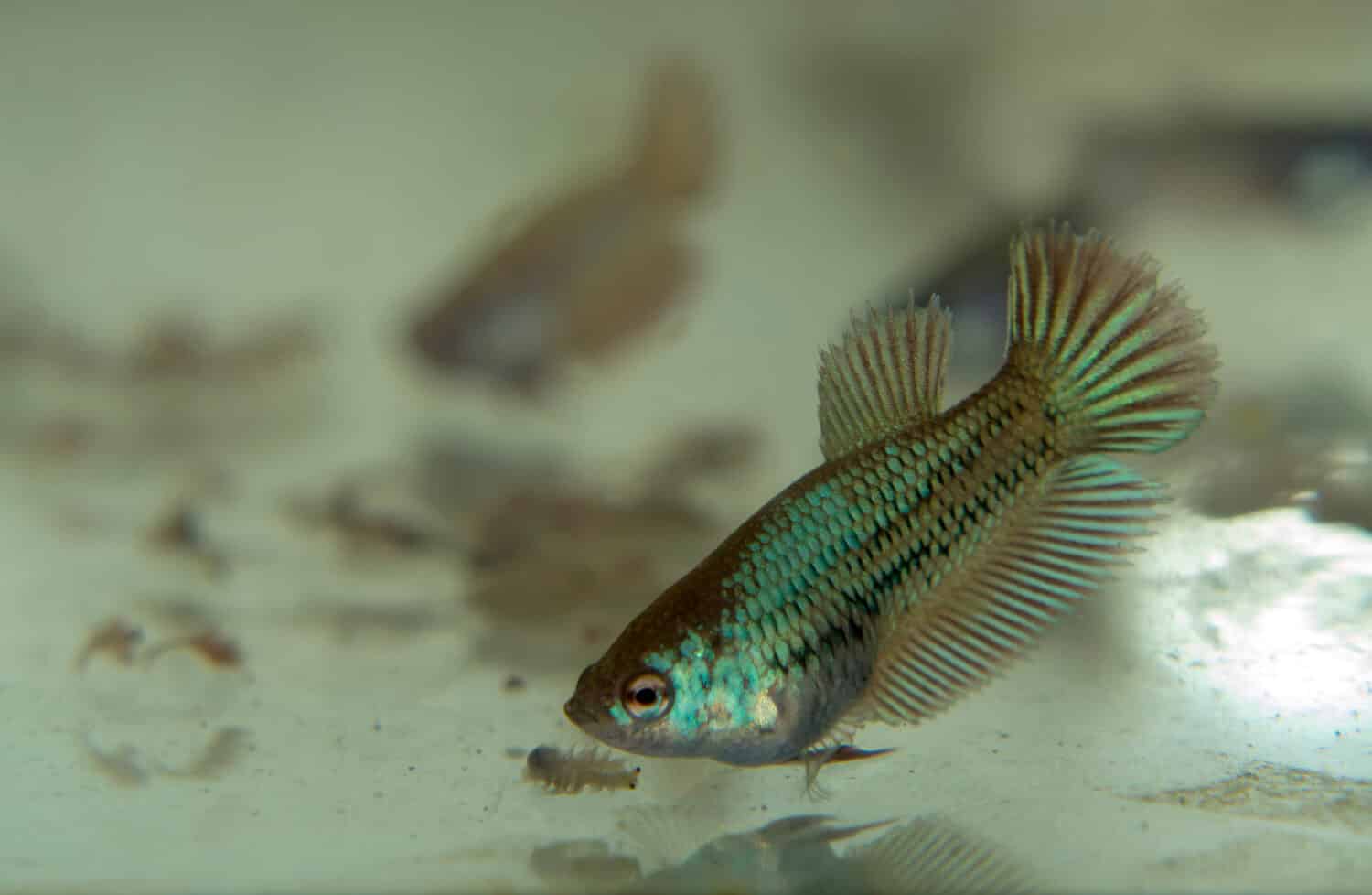
Betta fish love foods like baby brine shrimp, and healthy bettas rarely refuse foods.
©Pantherius/Shutterstock.com
A healthy betta fish will have a hearty appetite and rarely refuse a meal. If they do, it may indicate that they are feeling unwell or stressed. There are several reasons your betta fish may refuse food: poor water quality, disease, or stress from incompatible tank mates. It is also important to ensure that your betta is fed an appropriate number of healthy foods. You should avoid overfeeding, as this can cause uncomfortable abdominal swelling and potential water quality issues.
5. Inactivity and Bottom-Sitting
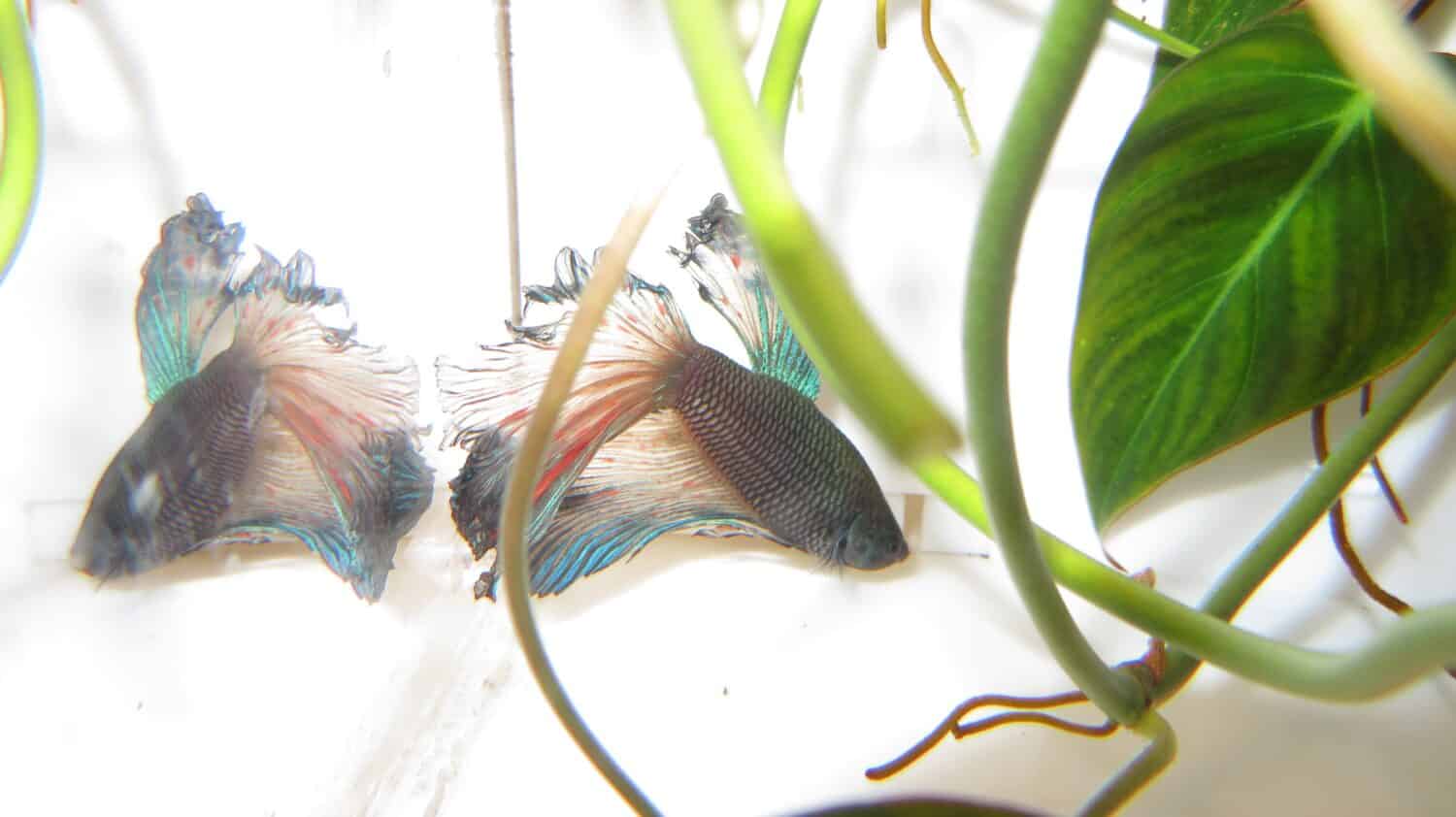
An unhealthy betta will spend more time hiding and appearing listless. Inactivity is not a good sign.
©elisabet nugraheni/Shutterstock.com
An unhealthy betta fish will act lethargic and spend most of their time hiding or bottom-sitting. This is a clear indication that your betta fish is not feeling good and that something in the environment is causing stress.
The main reasons a betta fish might sit on the bottom of the tank are disease or exposure to high levels of ammonia or nitrite in the tank. The water may also be too cold for your betta fish, especially if you don’t have a heater. This can cause your betta fish to slow and become more susceptible to certain diseases.
6. Getting Sick Easily
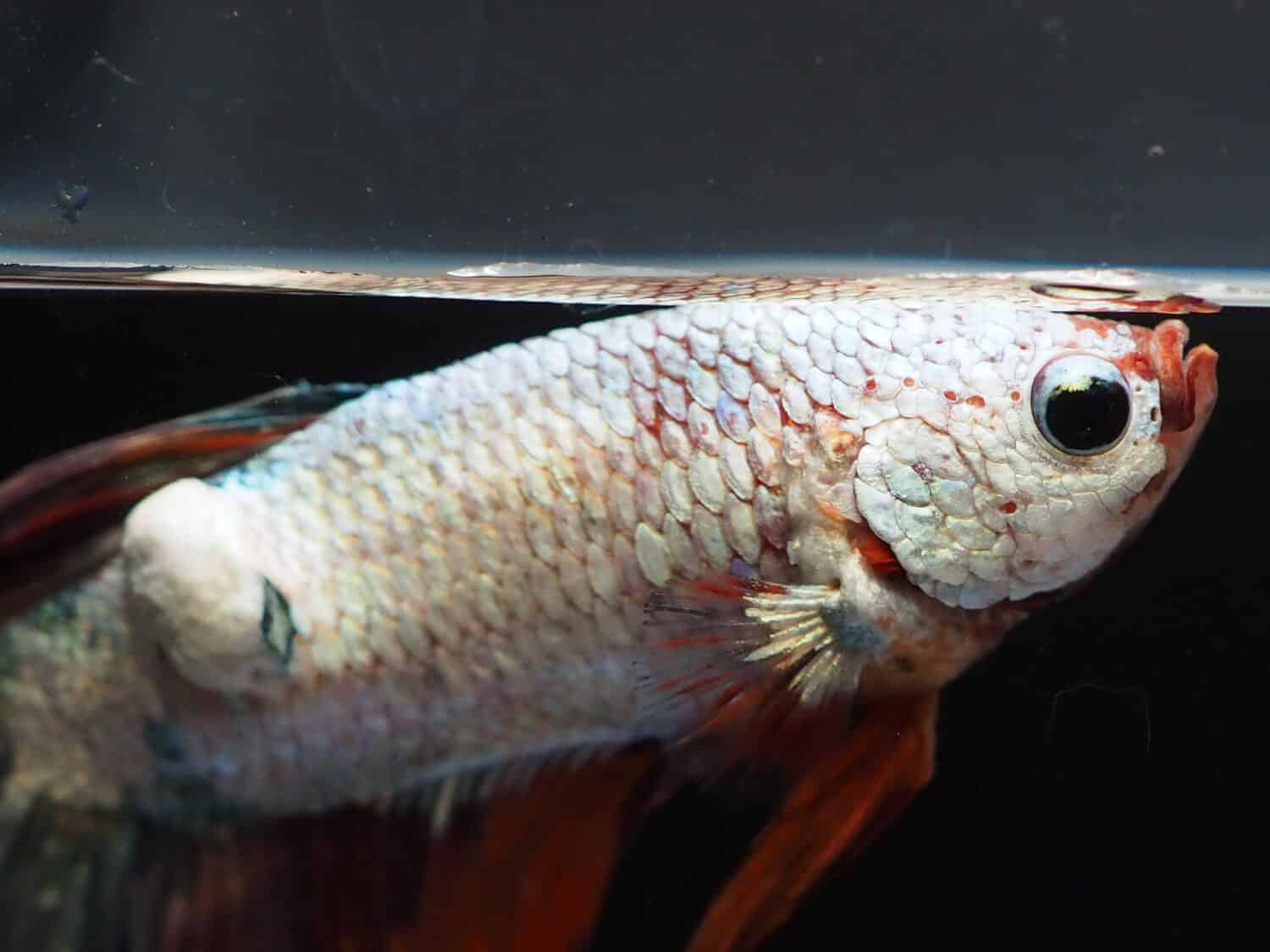
An overly stressed betta fish may have trouble fighting off diseases that can make them feel very ill.
©Lienda Yunita Apponno/Shutterstock.com
A healthy betta fish typically has a well-functioning immune system that lowers risk of certain diseases. However, a stressed betta lacks a strong immune system and may become ill often. Such a fish might recover from one infection, right before developing another one.
If this is the case, it is important to determine what stressors could be to blame. Poor water quality, confined space, and aggressive tank mates can make your betta fish feel constant stress, making disease more likely.
7. Abnormal Swimming Patterns

Betta fish should swim with vigor, only resting now and again.
©Napat/Shutterstock.com
Bettas should be able to swim up and down without struggling with buoyancy. They should also be able to move their bodies and fins comfortably in the water. While it can be common for heavy-finned bettas to be slower swimmers than short-finned varieties, a healthy betta shouldn’t have great difficulty swimming.
If you notice that your betta swimming with clamped fins, sideways movements, or listlessness, it may be dealing with disease, poor water quality, or damaged fins.
8. Flashing Behavior

Water quality issues like high ammonia are harmful to betta fish. Test the water with a liquid testing kit.
©Ladanifer/Shutterstock.com
Maintaining good water quality in the aquarium is essential for betta fish. When the ammonia levels in the tank are too high, your betta fish may become stressed. This can lead to a behavior referred to as “flashing”, during which a fish will dart around the tank and dive against the substrate, glass, or aquarium decorations. Bettas will do this to try and alleviate the discomfort they are feeling from poor water quality. Other pollutants like chlorine and pollutants can also irritate betta fish, causing them to flash.
Additionally, certain external parasites such as Ichythyophthirius (white spot disease), Trichodina, Costia, and Chilondenella can cause flashing behavior in fish.
9. Rapid Breathing
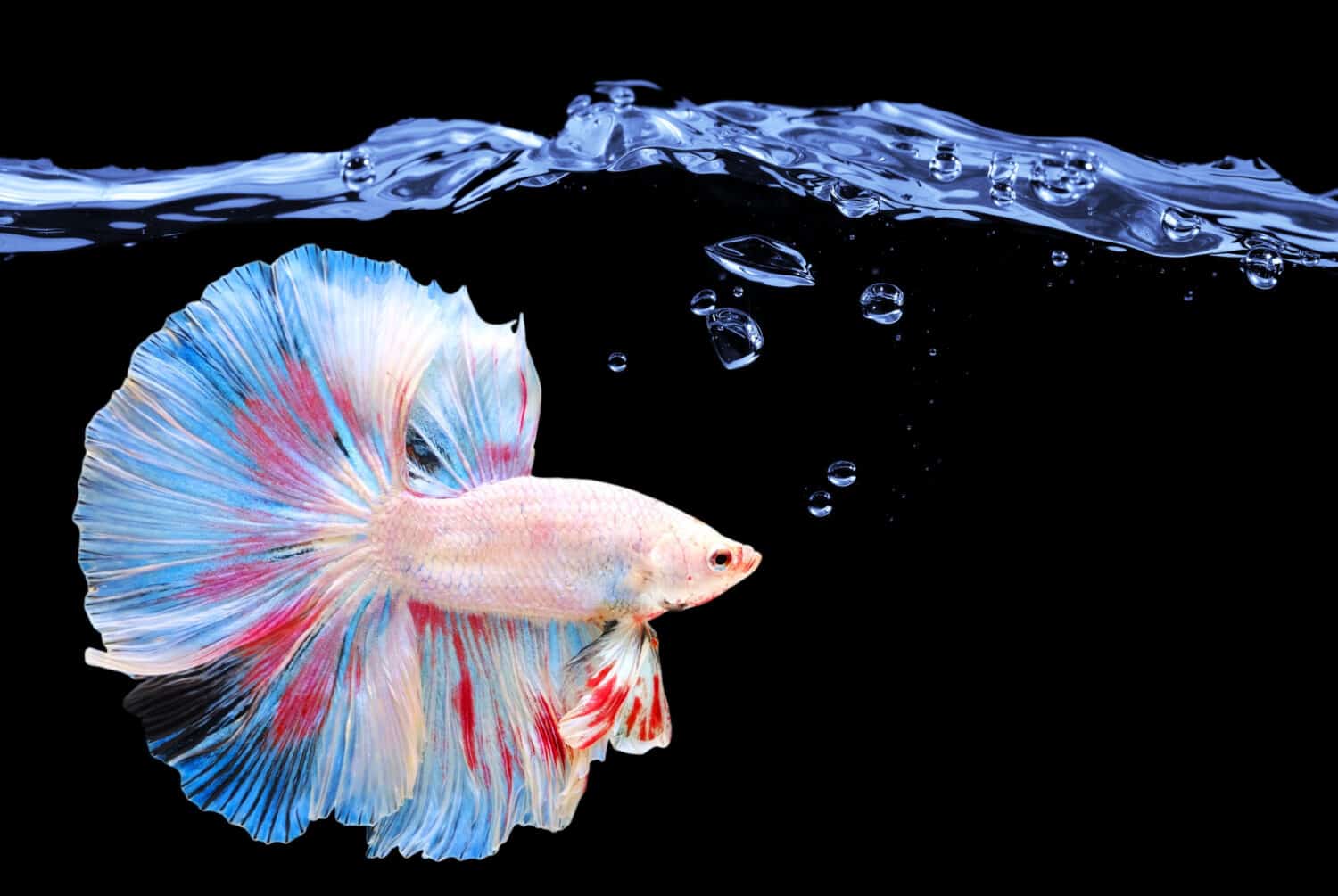
Betta fish can develop a labyrinth organ in environments with low oxygen levels.
©Shutterman70/Shutterstock.com
Although betta fish are well adapted to breathing in environments with low oxygen levels for a short period, they still require sufficient oxygen to breathe normally. In tanks with low oxygen levels, usually due to certain medications and overly warm water, your betta may struggle to breathe.
This can cause bettas to rapidly open and close their mouths to pass water over their gills, and it will be clear they are struggling to breathe. Most bettas will become lethargic when they are rapid breathing and prefer to hide or bottom-sit.
Another cause of rapid breathing in bettas is gill irritation. This can happen due to pollutants in the water, high ammonia, and parasitic infestations that affect the gills. You should ideally keep the ammonia and nitrite levels in your betta’s tank at 0 ppm (parts per million). The nitrates can be slightly higher at around 15 ppm.
10. Clamped Fins
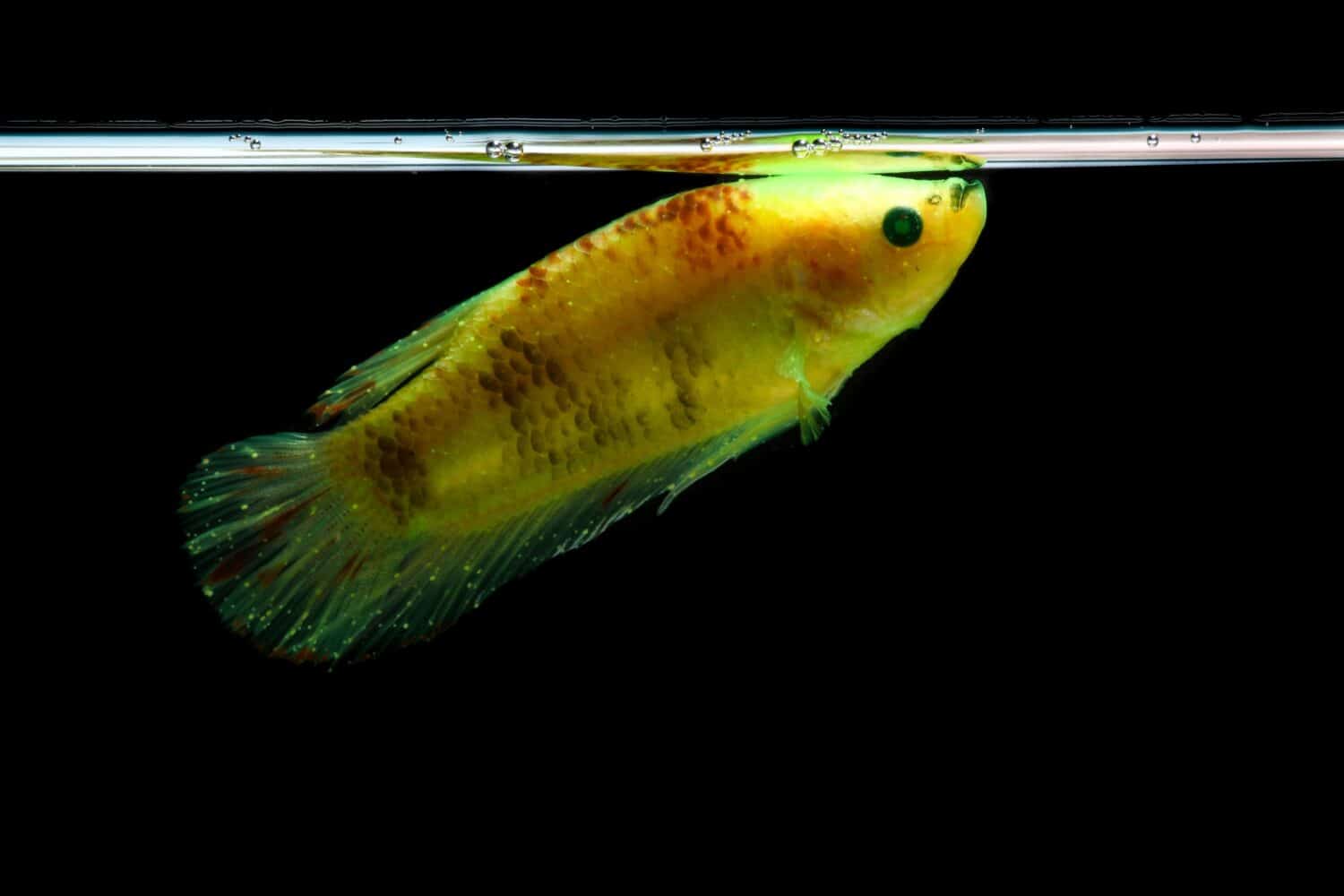
Sick or stressed betta fish will swim with tightly clamped fins.
©Rumaisha Project/Shutterstock.com
Bettas should have relaxed fins when they are resting, and upright fins when they are swimming, but never clamped fins. Clamped fins are held tight against the body when the fish is resting and swimming. Clamped fins aren’t a disease, but rather a symptom of disease or water quality issues. High levels of ammonia and parasites are some of the leading causes of clamped fins in betta fish.
Tips for Keeping Your Betta Fish Healthy
If you are new to keeping betta fish or simply want to know how to care for your betta properly, these tips will ensure you keep your betta healthy and happy.
Tank Size
Instead of placing your betta fish in a bowl or vase, opt for a suitably sized tank instead. Bettas do not belong in small bowls or vases, according to veterinarians Dr. Krista Keller and Dr. Jessie Sanders. Most betta fish require a minimum tank size of five gallons, and it should contain more horizontal space than vertical space.

The ideal aquarium for your betta fish should be spacious and equipped with a filter and heater.
©Sandra Burm/Shutterstock.com
Fishbowls are usually too small for bettas and do not offer them enough space to thrive. Furthermore, bowls and vases make it difficult to add a proper filter, heater, and plants inside without affecting the amount of swimming space.
Heater and Filtration System
A filtration system and heater are essential for these fish. Bettas need a filter in their tank to prevent the water from becoming stagnant, as well as to process waste and create beneficial bacteria. Since bettas are tropical fish that need a temperature range between 74 to 80 degrees Fahrenheit, a heater is necessary.
Oxygenation System
Bettas are anabatoides, meaning they can develop a labyrinth organ to breathe atmospheric air in overwise uninhabitable conditions. However, they still need sufficient oxygen in their tank. If the filtration system isn’t providing the tank with enough surface agitation, you might need to look into using a bubbler system.
Compatible Tank Mates
Betta fish are considered solitary fish, with rare instances of some female bettas getting along in sororities. However, all males are solitary and will fight till severe injury or even death. Housing two betta fish together can cause both fish to become very stressed, which is not good for them. Furthermore, males and females should not be housed together, and may only be introduced in appropriate conditions for a short time during breeding.
It is best to house your betta alone, possibly with snails or shrimp, and not with incompatible tank mates like goldfish, koi, or cichlids.
Healthy Diet
Betta fish are natural carnivores in the wild, so they benefit from a similar diet in captivity. A quality betta fish pellet formulated with animal protein as a main ingredient is recommended. You can also supplement their diets with live or freeze-dried foods like bloodworms and baby brine shrimp.
Do Bettas Make Bubble Nests?
Bettas create bubble or foam nests when they are ready to reproduce. It is a normal part of their breeding behavior, and not necessarily an indication that they are healthy or unhealthy. Bettas have been known to create bubble nests even in improper conditions, like unfiltered bowls or vases. Bettas kept in improper conditions without enrichment, plants to explore, and adequate swimming space, may become bored and creating a bubble nest might be a form of entertainment.
However, a betta fish creating bubble nests is usually doing so to attract a mate and show willingness to reproduce. You can expect your betta fish to create a bubble nest around three to five months of age. If your betta fish isn’t building a bubble nest, don’t worry too much, as it doesn’t automatically mean your betta fish is unhappy.
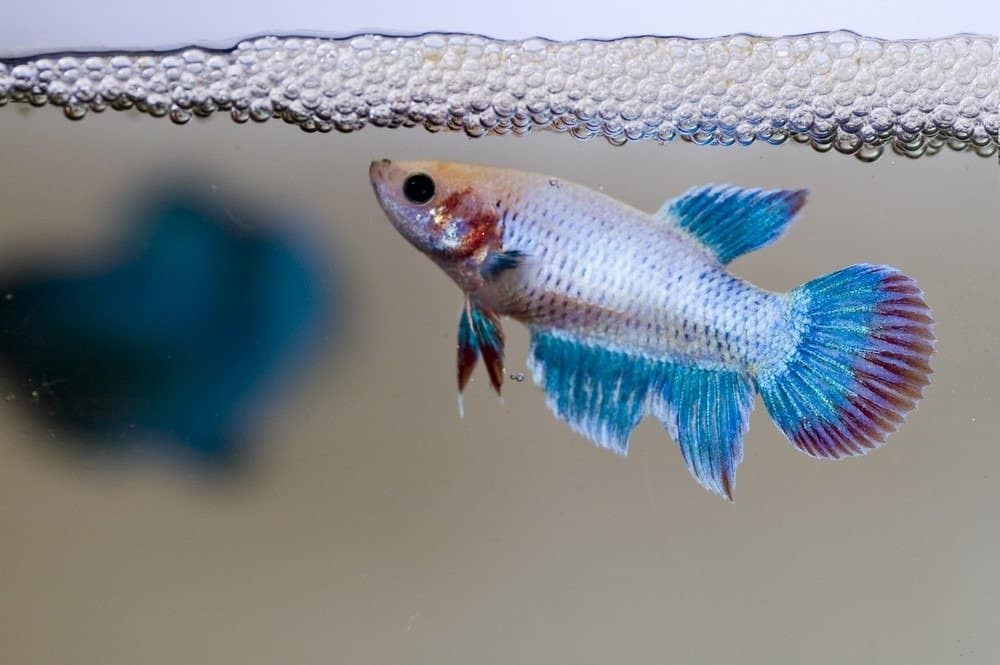
Betta fish will create a bubble nest on the surface of the water when they are ready to reproduce.
©mnoor/Shutterstock.com
Certain bettas are more avid nest builders than others, and some won’t even begin building one unless they are exposed to a female betta fish.
Final Thoughts
An unhealthy betta fish usually shows two or more of the signs we have discussed. With proper care and appropriate housing, you can help your betta fish remain healthy and happy.
The photo featured at the top of this post is ©
Thank you for reading! Have some feedback for us? Contact the AZ Animals editorial team.






